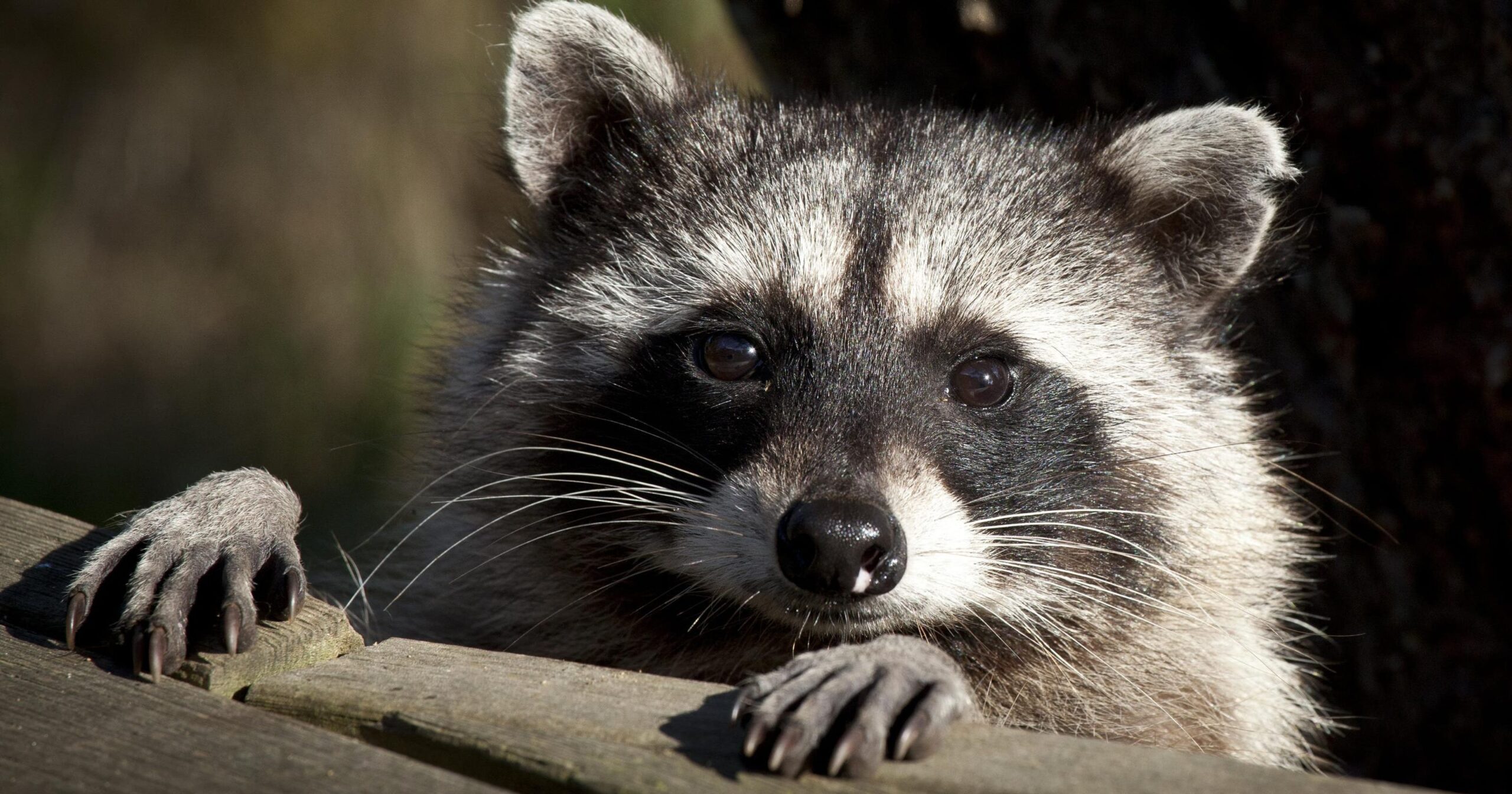When you ask people the question, “What does a raccoon look like?” they almost always answer with “It is an animal with a mask and a striped tail”. Raccoons are so common that we take their appearance for granted. But have you ever wondered why these masked bandits have such distinctive facial markings? The surprising answer is that the black stripes beneath their eyes help them to survive.
The Purpose of What a Raccoon Looks Like
Raccoons have been around for millions of years. No one knows for sure how the first raccoons looked, but scientists believe their facial markings became more prominent over time because they helped the animals to survive. Black smudges on a raccoon’s face provide the following benefits:
- Keep their faces warm. Black fur retains more heat than light-coloured fur does, insulating a raccoon’s nose from cold weather and snow.
- Help them see better. The black marks absorb light, cutting down on reflective glare at night from water and other shiny objects.
- Hide their eyes. Raccoons can fool predators such as bobcats, eagles, and owls into overlooking them by hiding with only their camouflaged faces showing.
Defensive Advantages of Having a Mask
One theory to explain what a raccoon looks like is that the mask serves as a warning for larger carnivores to back off. If you have ever watched a raccoon defend itself, then you know these otherwise docile animals can inflict a lot of damage. Once predators see what a raccoon is capable of, they learn to stay away from any animal with a similar appearance.
As further evidence for the predator deterrent theory, scientists point to other medium-sized carnivores that also have a reputation for acting ferociously when provoked. Like the raccoon, they also have contrasting light and dark colours on their cheeks. A few examples of these masked species include the following:
- Red panda
- Wolverine
- Badger
- Raccoon dog
- Black-footed ferret
Different Masks Raccoons Have
What does a raccoon look like? To most people, one raccoon looks identical to any other raccoon. Upon closer inspection, however, it is possible to identify varying amounts of brown, black, and yellow fur that make individual raccoons appear different from each other. Raccoons can recognize other individuals of their own species, partly because of these unique patterns in facial colouring.
Occasionally, you may be lucky enough to spot a raccoon with one of the following rare colour patterns:
- Albino. The word albino describes any animal without pigment molecules to give colour to their fur and skin. An albino raccoon would have red eyes, a white coat, and no mask at all.
- Leucistic. Leucistic raccoons have less pigmentation than normal raccoons do. Their hair is pale brown and they may or may not have light-coloured masks on their faces.
- Melanistic. These raccoons appear almost black due to the extra pigment in their fur. It may be difficult to distinguish their masks from the rest of their dark faces.
What Does a Raccoon Look Like? Skedaddle Knows!

Knowing the possible differences in raccoon appearance is just one part of the training we provide our technicians at Skedaddle. They are also experts in removing raccoons from places where you don’t want them. It is imperative to call in professionals for humane removal when raccoons come indoors, especially if there are baby raccoons involved.
Skedaddle Humane Wildlife Control believes in long-term prevention strategies to keep troublesome raccoons out of your house for good. After removing the raccoons by hand, we will locate possible entry points and seal them to prevent further wildlife problems. Contact us by phone to learn more about what a raccoon infestation looks like on your property or to schedule a home inspection today.





